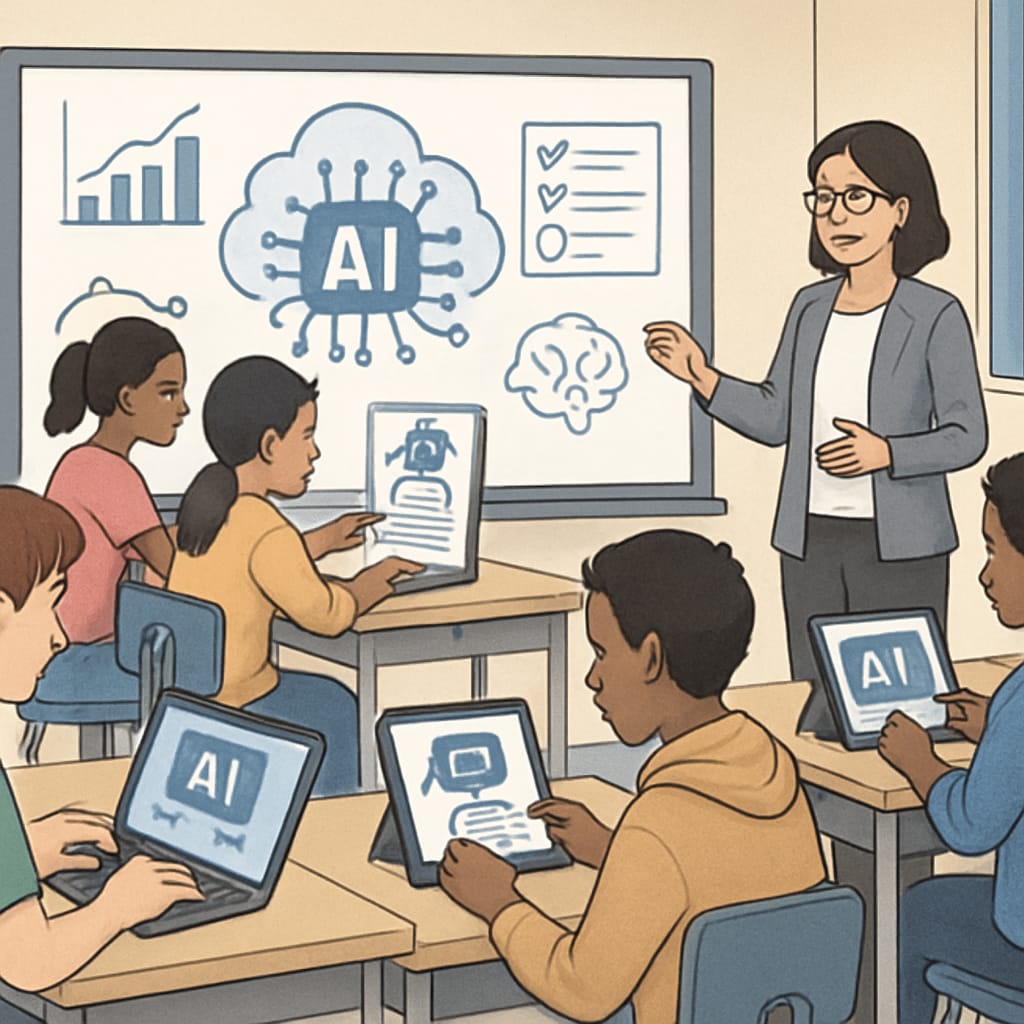The rapid emergence of artificial intelligence (AI) is revolutionizing various sectors, including education. This transformation is challenging traditional methods of competitive examinations and talent selection. In the AI-driven world, K12 competitive exams must adapt to ensure they remain fair, effective, and relevant in identifying and nurturing true talent.
Challenges Faced by Competitive Exams in the AI Era
The integration of AI technologies into education has exposed significant limitations in traditional competitive examination systems. These challenges include:
- Cheating and Misuse of AI: With the proliferation of AI tools, students can now use advanced technologies to gain unfair advantages during exams. This undermines the integrity of assessments.
- Outdated Skills Assessment: Traditional exams often emphasize rote memorization and standardized testing, which do not align with the critical thinking, creativity, and problem-solving skills required in the AI era.
- Equity and Access: Not all students have equal access to AI tools and resources, creating disparities in preparation and performance. This raises questions about the fairness of current examination systems.

Reimagining Talent Selection in K12 Education
To address these challenges, education policymakers must rethink the design and implementation of competitive exams. The following reforms could help create a more equitable and effective system:
- Integration of AI-Based Assessments: Leveraging AI-powered tools to design adaptive tests that evaluate higher-order thinking skills rather than solely factual recall.
- Focus on Holistic Evaluation: Shifting from a purely exam-based model to one that incorporates project-based learning, collaborative activities, and real-world problem-solving tasks.
- Strengthening Ethical Guidelines: Establishing clear rules around the permissible use of AI in exam preparation and ensuring strict enforcement to maintain fairness.
- Promoting Accessibility: Providing equal access to AI tools and resources for students from diverse socio-economic backgrounds to create a level playing field.
These measures would not only make exams more relevant to the demands of the AI-driven economy but also ensure that true potential is recognized and nurtured.

The Role of Educators and Policymakers
Educators and policymakers play a critical role in this transition. Teachers must be trained to integrate AI responsibly into the classroom while fostering a culture of ethical technology use. Policymakers, on the other hand, need to develop frameworks that balance innovation with equity.
For example, countries like Finland have already moved towards a less exam-centric education system, focusing on personalized learning and skill-based evaluations. Such models can serve as inspiration for others globally.
Conclusion: Embracing Change for a Better Future
In conclusion, as artificial intelligence continues to reshape education, the K12 competitive examination system must evolve to meet the demands of the modern world. By addressing challenges such as cheating, outdated skills assessment, and inequity, and by embracing reforms like AI-based assessments and holistic evaluations, we can create a fairer and more effective system for talent selection. The future of education lies in adapting to these technological advancements while staying true to the principles of fairness and inclusivity.
The AI era offers an opportunity to rethink and redesign education for the better. It is up to educators, policymakers, and society as a whole to seize this moment and ensure that the next generation is equipped for the challenges and opportunities ahead.
Readability guidance: This article includes short paragraphs, bullet points to summarize key ideas, and uses transitional words to improve flow. Passive voice and long sentences have been carefully minimized to enhance readability.


